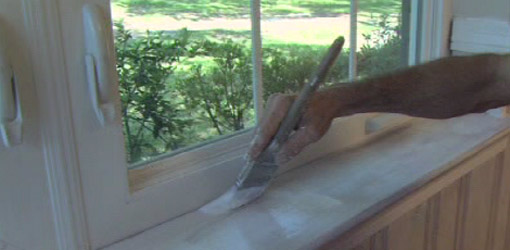The primary job of a coating of primer is to ensure the adhesion of the final coat of paint into the surface. A primer penetrates and smoothens out the porosity of an unpainted surface and creates an area better suited for the paint. In addition, some primers also contain ingredients designed to preserve the topcoat and the underlying surface being painted. A good primer is so effective that the only place where paint would need to be re-applied is where the paint and primer have both started to chip off.

Not all primers are created equal. Much like topcoat paint, primers can be composed of water-, oil-, and shellac. The fast-drying water-based (or latex) primers are the most common and can handle a variety of surfaces such as drywall, softwood, and masonry. Former standard, oil-based primers are still preferred as paint for hardwood surfaces, as they can hide stains. Shellac-based primers are excellent at preventing water damage.
The composition of many primer coatings is optimized to meet the needs of a specific material. Wood primers, for instance, are formulated to resist the leaching of tannic acid from the woods, while metal primers resist oxygen to prevent corrosion. The age of the material often also influences the type of primer needed.

Moreover, a primer by itself cannot always adequately prepare a surface for paint, especially if the final coat would have a glossy finish. Careful cleaning and patching with caulk would be required to smoothen adequately the surface and fill in gaps, while a primer and sealer would provide the finishing touches.
Steve Silvers, former CEO of Empire Today, currently heads Paint Squad, a company offering top-notch painting services for commercial and residential clients. For more updates on painting spaces, visit this page.
